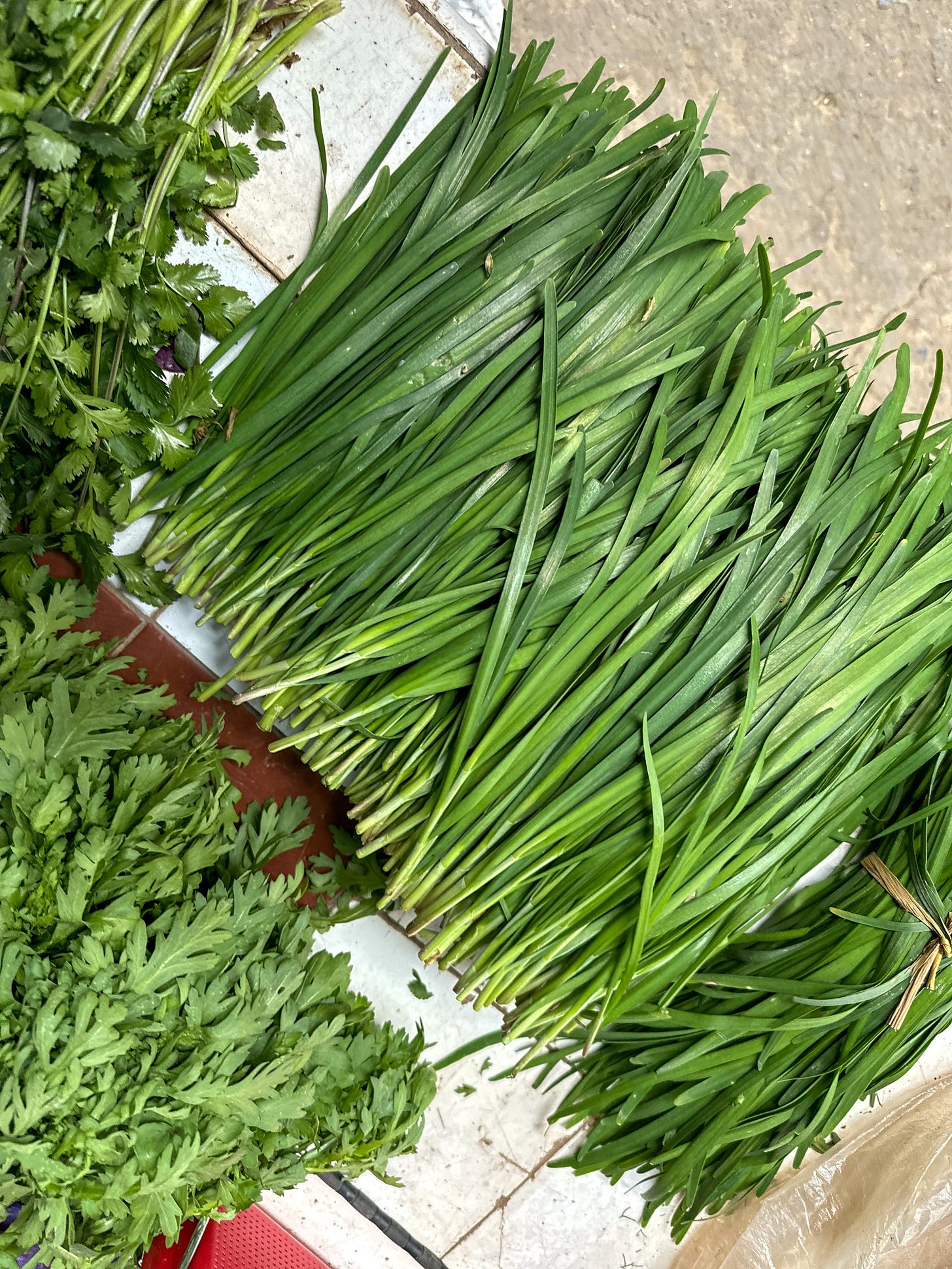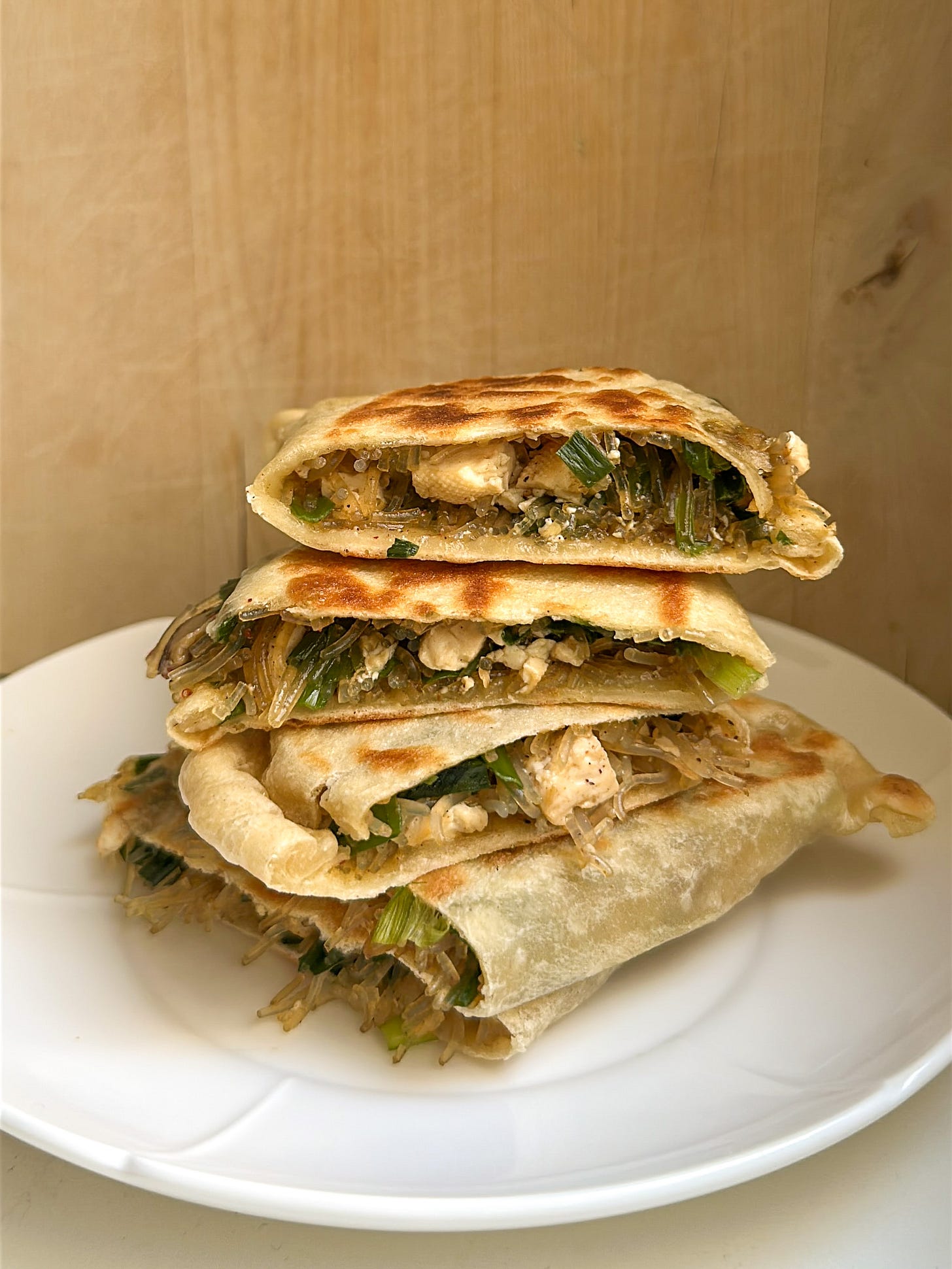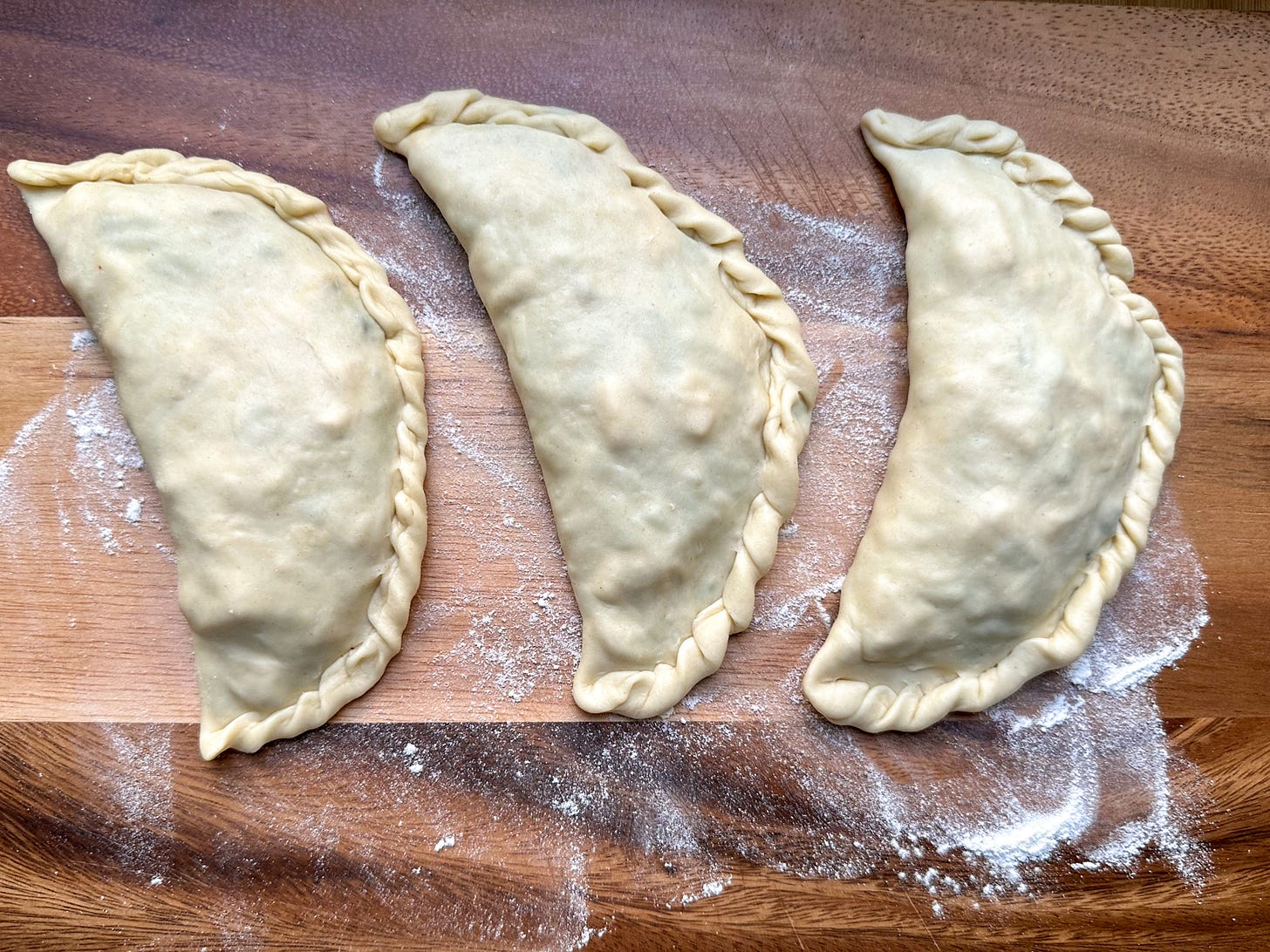When I visited China in the spring of 2023—my first spring trip in years—I followed the women in my family—my mom and grandmas—as we wandered through the farmers' markets in my hometown, a small town in northern Sichuan. What struck me was the excitement around seasonal eating and the sheer abundance of fresh spring produce. Delicacies like toon leaves (香椿, xiangchun), wild goji leaves, red amaranth (苋菜, xiancai), shepherd’s purse (荠菜, jicai), and spring chives were sought-after and prepared simply to highlight their freshness and umami. They were often quickly blanched for cold appetizers, stir-fried, or scrambled with eggs.

In Germany, a similar excitement surrounds wild garlic (ramps or Bärlauch), which starts sprouting in March—the first sign of spring I eagerly search for at the local farmers’ market. Because of its resemblance to Chinese chives (jiu cai, 韭菜), the diaspora often forages for it as a local substitute, nicknaming it ye jiucai (wild chives).
The tradition of "biting into spring" (咬春) has been deeply rooted in Chinese culture for centuries. On Lichun (立春), the first day of spring in the lunar calendar (typically in February), people celebrate by eating seasonal foods—spring rolls, pancakes, and platter with fresh greens like scallions, green garlic, radishes, and Chinese chives. These ingredients were believed to boost metabolism and help the body adjust to seasonal changes. But the joy of seeking out and savoring spring’s bounty extends well beyond Lichun, continuing throughout the season.
The book Forbidden City Banquet (《故宫宴》) describes a Qing Dynasty tradition in which royalty would eat a "Five Pungent Herb Platter" (五辛盘) featuring garlic, scallions, Chinese onions, chives, and cilantro1. Since the Chinese word for "pungent"(辛) is a homophone for "new"(新), as both are pronounced as xīn, eating these greens was thought to symbolize renewal and bring good luck.
Among these five pungent herbs, spring Chinese chives are especially loved. These greens, often labeled as Asian chive or garlic chive, are available throughout the year, but the first-cut spring chives, known as 头茬韭菜 or 春韭, are considered the most tender and aromatic. One beloved way to enjoy them is through chive pockets (韭菜盒子, jiucai hezi), a stuffed pastry popular in northern Chinese households. These half-moon-shaped pockets, crisp on the outside and bursting with fragrant filling, are a post-Lunar New Year staple and are widely eaten on Jingzhe (惊蛰, "Awakening of Insects"), the solar term before the spring equinox, chunfen.
Making Chive Pockets
Chive pockets fall somewhere between dumplings and stuffed pancakes. The filling typically consists of chopped chives, scrambled eggs, and vermicelli (mung bean or sweet potato starch noodles). Some versions include dried shrimp or minced pork, but this recipe features tofu and shiitake mushrooms. One of the earliest references to chive pockets appears in the 18th-century cookbook Recipes from the Garden of Contentment by Yuan Mei: "Finely chop chives, season them, wrap them in dough, and fry in oil. For an even better texture, mix lard into the dough—it will turn delightfully crisp."2
Chive pockets can be either pan-fried or deep-fried, reflecting another divide between Northern and Southern Chinese cooking. The modern version uses a half-hot water dough (半烫面, ban tangmian), made with both hot and room-temperature water. The hot water partially cooks the starch, giving the dough a balance of softness and elasticity. Inspired by Magic Ingredient’s recipe, I also added a touch of yeast to get softer dough so they don’t harden when cooled.
For the best flavor, use locally grown spring Chinese chives. Wild garlic (ramps) make a fantastic substitute if you can find them. Each bite of a chive pocket encapsulates the essence of spring—fresh, fragrant, and deeply satisfying. I like to serve them with soup or congee for a full meal, or you can eat it as breakfast.
Recipe for Tofu and Chive Pocket (豆腐韭菜盒子, Doufu Jiucai Hezi)
makes 8 pockets
Ingredients
For the Dough:
240g (2 cups) all-purpose flour
60g (1/4 cup) boiling water
60g (1/4 cup) room-temperature water
1 tbsp vegetable oil
½ tsp salt
⅛ tsp dry yeast (1g)
For the Filling:
50g (2 oz.) glass noodle vermicelli
2 dried shiitake mushrooms
100g garlic chives
1 tbsp sesame oil
250g (9 oz.) firm tofu
1 tbsp light soy sauce
1 tbsp oyster sauce (or vegan alternative, optional)
½ tsp sugar
¼ tsp white pepper
½ tsp salt
½ tsp five-spice powder
¼ tsp ground Sichuan pepper
½ tsp chili flakes (optional)
oil for pan-frying
Instructions:
Make the dough: In a bowl, mix the flour and salt. Add 60g of boiling water, stirring with chopsticks until small clumps form. Then add the room-temperature water, yeast, and oil. Knead until a smooth dough forms. Cover and let rest for 30 minutes.
For the filling: Soak the vermicelli in boiled water until rehydrated, then drain and cut into small pieces. Soak dried shiitake mushrooms in hot water until fully rehydrated, and cut into small pieces. Trim the ends off the chives, chop them into small 0.5-inch (1.5 cm) pieces, and toss with 1 tbsp sesame oil. Cut or crumble the tofu into small pieces. In a bowl, combine the chives, vermicelli, tofu, soy sauce, oyster sauce, white pepper, Sichuan pepper, five-spice powder, sugar, salt, and chili flakes. Mix well.
Assemble the pockets: Lightly oil the working surface and rolling pin, Divide the rested dough into 8 portions, about 45g each. Roll each piece into a thin round (15-18cm/ 6-7 inches diameter). Add 2-3 tbsp of filling, fold into a crescent shape, press out any air, and seal the edges. Crimp with a fork or pleat if desired (see my video below or this video for the pleats breakdown).
Cook the pockets: Heat a pan over medium heat and brush with about 1 tsp oil. Over medium heat, fry the pockets for 4-5 minutes per side, with the lid on, until golden and crisp. Add more oil between batches. Dip in a mix of chili oil and black vinegar
(*this video is a paid collaboration with a German Asian grocery store, however, the recipe is developed independently and this newsletter is not sponsored)
If you’re looking for a shortcut, here’s a ramp and egg version made with store-bought dumpling wrappers:
Ramp Dumplings to Celebrate Spring
In Germany, every day still feels like an arbitrary toss-up between spring and winter, but hope is on the horizon: early cherry trees begin to blossom under the gentle rays of sunshine, while tulips and asparagus slowly debut on the market. My Chinese calendar reminds me that it’s Chun Fen (春分, spring equinox day) this week around March equinox day, a
Some Chinese texts also say five pungent include field mustard (Brassica rapa subsp. oleifera) stems, known as 芸薹
“韭合:韭菜切末加作料,面皮包之,入油灼之,面内加酥更妙。”










This was so interesting, and the recipe looks amazing, will have to try!
Nice recipe!